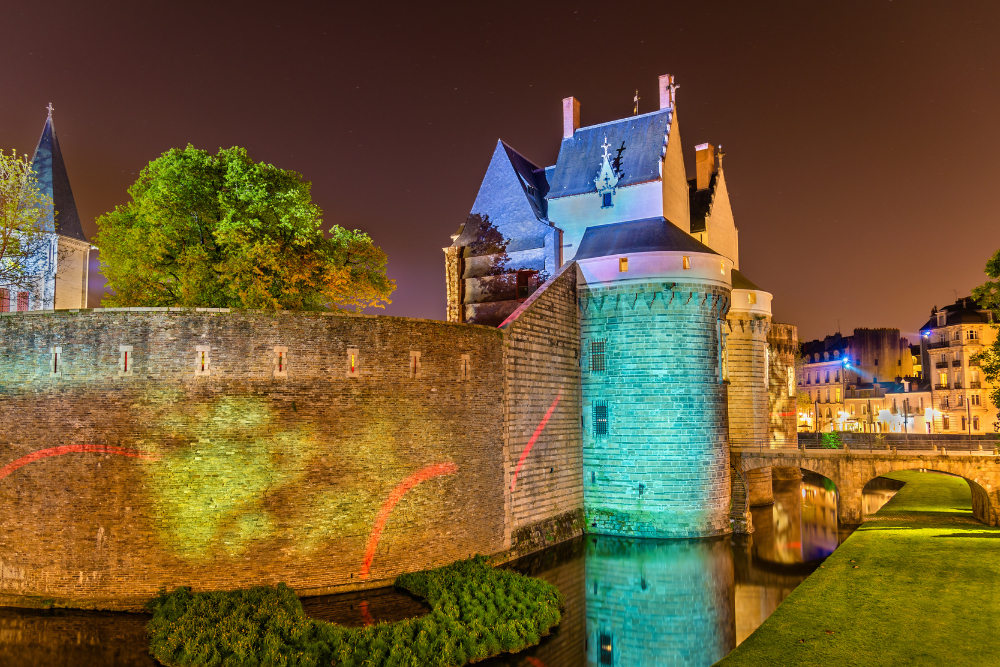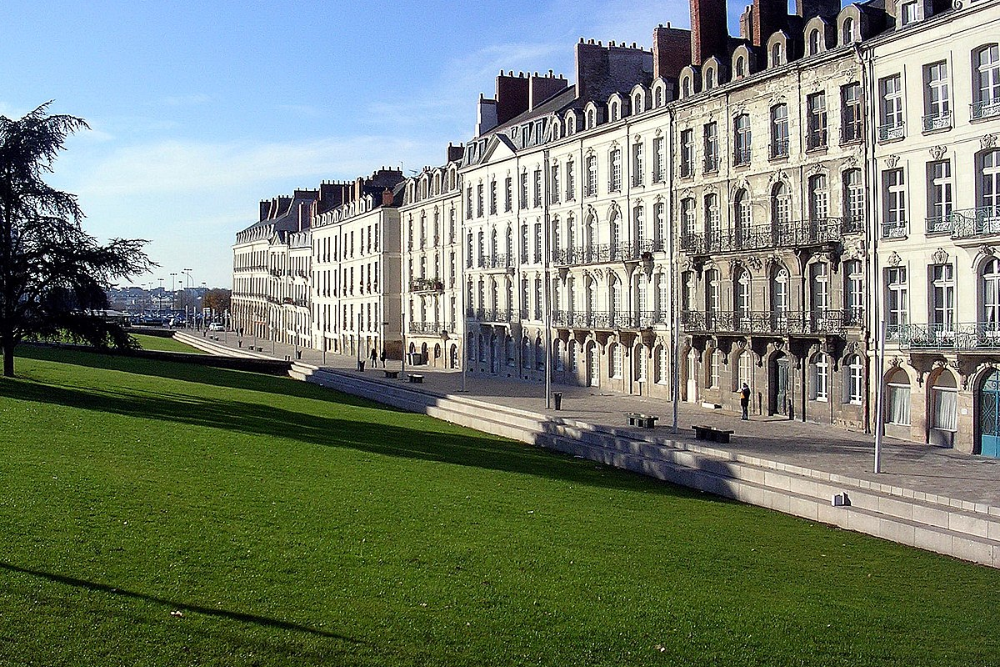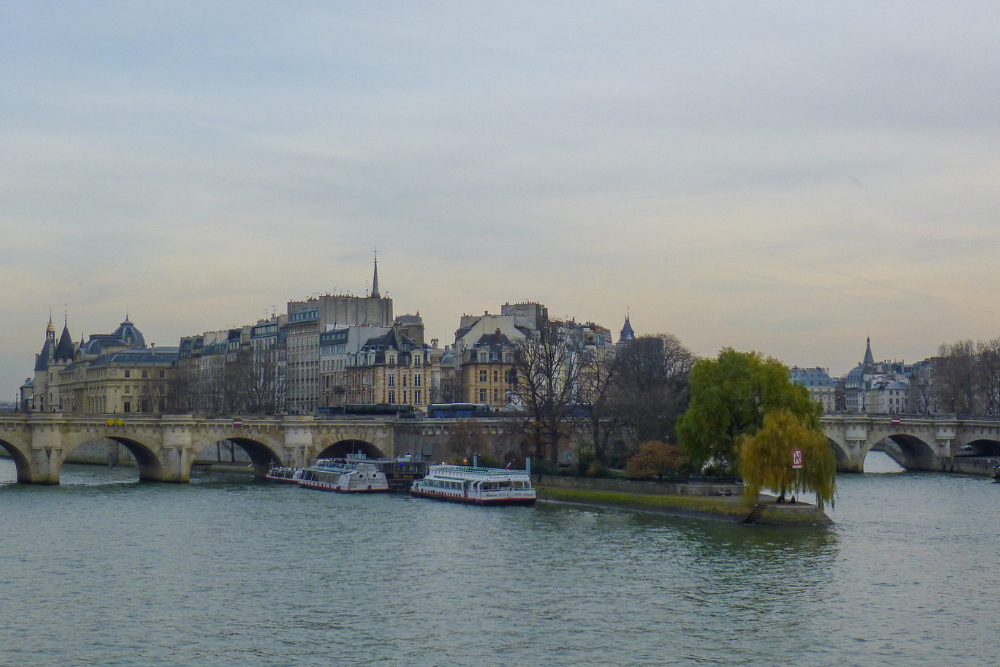Nantes, a vibrant city on the Loire River in western France, is a treasure trove of historical and architectural gems. Known for its maritime heritage, rich cultural history, and dynamic modern flair, Nantes offers a blend of ancient castles, neoclassical buildings, and contemporary structures. Whether you’re an architecture enthusiast or a casual traveler, exploring the architectural landmarks of Nantes provides a fascinating journey through time, showcasing the city’s evolution from medieval fortresses to cutting-edge modernity.
In this guide, we’ll take you through some of the must-see architectural sites in Nantes, each of which tells a unique story about the city’s past, present, and future.
1. Château des Ducs de Bretagne (Castle of the Dukes of Brittany)
Why Visit:
The Château des Ducs de Bretagne, or Castle of the Dukes of Brittany, is one of Nantes’ most iconic landmarks. This imposing fortress, located in the heart of the city, dates back to the 15th century and was the residence of the Dukes of Brittany. The castle has witnessed centuries of political upheaval and cultural change, making it a symbol of the city’s deep historical roots.
What to See:
- The Château’s Exterior: Admire the impressive medieval fortifications, complete with ramparts, towers, and a large moat. The castle’s architecture combines military defense features with Renaissance elegance.
- The Museum of Nantes History: Inside the castle, you’ll find the Musée d’Histoire de Nantes, which explores the city’s history from its medieval origins to its role as a key port during the colonial era.
- The Beautiful Courtyards: Take a stroll through the castle’s peaceful courtyards, surrounded by impressive walls and gateways.
Architectural Highlights:
The castle blends medieval and Renaissance styles, with a mix of Gothic elements and the more refined lines of the Renaissance era. The iconic Porte Saint-Pierre, a grand gate with sculptural details, is a standout feature of the castle’s architecture.
2. La Cathédrale Saint-Pierre et Saint-Paul (Nantes Cathedral)
Why Visit:
The Cathédrale Saint-Pierre et Saint-Paul, or Nantes Cathedral, is one of the most stunning examples of Gothic architecture in France. Located in the heart of Nantes, this cathedral has been under construction for over 400 years and remains an iconic symbol of the city. Its grand scale, intricate details, and rich history make it a must-see for anyone visiting Nantes.
What to See:
- The Impressive Facade: The cathedral’s façade features intricate Gothic carvings, including representations of saints, angels, and Biblical scenes.
- The Stained Glass Windows: Inside, the cathedral is illuminated by beautiful stained glass windows, some of which date back to the 15th century.
- The Crypt and Tomb of François II: The cathedral also houses the tomb of François II, Duke of Brittany, and the crypt, which is an impressive space showcasing the medieval church’s architecture.
Architectural Highlights:
This Gothic cathedral is a masterpiece of architectural design, with its soaring vaulted ceilings, flying buttresses, and majestic rose windows. It combines influences from the Flamboyant Gothic and Renaissance styles, reflecting the city’s rich architectural heritage.
3. Les Machines de l’île (Machines of the Isle of Nantes)
Why Visit:
A true symbol of Nantes’ innovation and creativity, Les Machines de l’île is an extraordinary architectural and artistic project located on the banks of the Loire River. The site is home to mechanical animals, including the iconic Grand Elephant and the Carrousel des Mondes Marins (Marine Worlds Carousel), all inspired by the imaginative works of author Jules Verne, a Nantes native.
What to See:
- The Grand Elephant: A giant, 12-meter-high mechanical elephant that moves and sprays water. Visitors can ride the elephant, offering a fun and interactive experience.
- The Marine Worlds Carousel: A carousel featuring 35 marine animals, some of which are interactive and can be controlled by riders.
- The Workshop: The Machines of the Isle also includes a workshop where visitors can see artisans at work, crafting the intricate mechanical creatures that bring the park to life.
Architectural Highlights:
The architectural design of Les Machines de l’île is a combination of industrial steampunk and mechanical artistry, with buildings made from steel and wood. The creativity and craftsmanship involved in this project showcase Nantes’ thriving arts and industrial heritage.
4. Le Passage Pommeraye (Pommeraye Passage)
Why Visit:
The Passage Pommeraye is one of the most beautiful and historic shopping galleries in France. Built in the mid-19th century, this covered arcade is a hidden gem in Nantes, offering visitors a chance to experience the elegance of 19th-century French architecture. The passage is a mix of neoclassical and Baroque Revival styles, making it an architectural treasure.
What to See:
- The Grand Staircase: The passage is known for its grand staircase, adorned with statues, intricate balustrades, and frescoes, all leading up to the upper levels of the shopping arcade.
- The Elegant Storefronts: The galleries feature boutique shops, cafes, and beautifully decorated windows, adding to the passage’s timeless charm.
- Architectural Details: Look for stunning details like the iron-and-glass roof, which floods the space with natural light, and the marble columns and sculptures throughout.
Architectural Highlights:
The Passage Pommeraye combines elements of Neoclassical, Baroque, and Renaissance styles. Its elegant arches, sculptures, and decorative elements make it a prime example of 19th-century French commercial architecture.
5. L’île Feydeau (Feydeau Island)
Why Visit:
L’île Feydeau is a small island in the heart of Nantes, known for its charming neoclassical buildings and its historical importance as part of the city’s port area. The island was once home to wealthy merchants and boasts some of the finest examples of 18th-century French neoclassical architecture.
What to See:
- Elegant Mansions: The island is home to several well-preserved mansions with classical facades, balconies, and ornate doorways, which reflect the affluence of the 18th-century merchant class.
- Historic Canal Views: The island is situated along the Canal Saint-Félix, offering picturesque views of the water and the historic buildings lining its banks.
Architectural Highlights:
L’île Feydeau’s architecture is characterized by its neoclassical design, with finely detailed stonework, symmetrical facades, and elegant windows. The charming buildings provide a glimpse into the city’s prosperous past as a major trading hub.
6. La Tour Lu (Lu Tower)
Why Visit:
The Tour Lu is a striking tower located in the quartier Saint-Donatien, built as part of the former Lefèvre-Utile biscuit factory. The tower, shaped like a giant biscuit tin, is a quirky yet iconic piece of industrial architecture in Nantes. Though it was initially part of the factory, the tower has become a symbol of Nantes’ industrial and commercial history.
What to See:
- The Tower’s Unique Design: The Tour Lu is a distinctive structure with whimsical details, such as the sculpted representation of the famous LU biscuit brand’s logo at the top of the tower.
- The Surrounding Area: While the factory is no longer in operation, the tower stands as a reminder of the industrial heritage of Nantes and can be seen from various points in the city.
Architectural Highlights:
The Tour Lu is a perfect example of industrial architecture with playful and creative elements, showcasing Nantes’ ability to blend tradition with modernity.
7. La Cite des Congres (Nantes Congress Centre)
Why Visit:
The Cité des Congrès is a striking modern building in Nantes, designed by architect Jean Nouvel. This impressive congress center has become a symbol of the city’s forward-thinking approach to architecture. Its innovative design blends glass, steel, and concrete, making it one of Nantes’ most iconic modern structures.
What to See:
- The Unique Exterior: The building features a curved, reflective glass façade that contrasts with the more traditional architecture in the surrounding area.
- Interior Spaces: The center hosts various cultural events, conferences, and exhibitions, and its interior is just as impressive as the exterior, with open, airy spaces and cutting-edge design.
Architectural Highlights:
The Cité des Congrès is a testament to Nantes’ embrace of contemporary architecture, showcasing bold lines, modern materials, and an innovative approach to design.
Conclusion
Nantes is a city where the past and present coexist harmoniously, offering a rich architectural landscape that spans centuries. From the medieval grandeur of Château des Ducs de Bretagne to the cutting-edge design of the Cité des Congrès, Nantes is a place where every corner holds a piece of history, creativity, and cultural significance. Whether you’re drawn to classical French architecture, modern designs, or the city’s industrial past, Nantes provides an exciting array of must-see architectural sites that will inspire and captivate.












